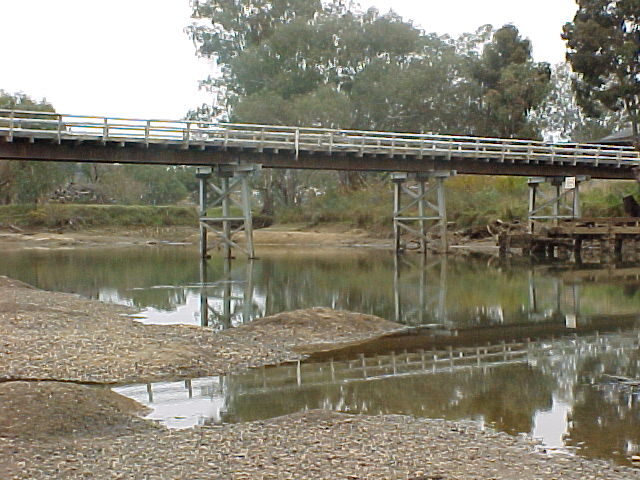|
|
|
The History of the
Murray River
 Paddle
steamers were used on the Murray River from the 1850's until the railways
took over much of the river trade in the 1920's. The Murray River used
to be called the Hume River, named after Hume the explorer.
Paddle
steamers were used on the Murray River from the 1850's until the railways
took over much of the river trade in the 1920's. The Murray River used
to be called the Hume River, named after Hume the explorer.
Captain Charles Sturt and his party
in 1829, followed the Murrumbidgee from the Jugiong Junction, and
named it the Murray River after Sir George Murray, who was the secretary
for the colonies. He re-named the river, knowing it was
already called the Hume River.
Once the Murray overflowed.
With all the fallen trees, the people of Albury constructed a temporary
bridge, to allow the trades people to cross. The first voyage down the
Murray River from Albury was made by F. Gerstacker on his journey around
the world. He left Albury in a canoe made from gum trees on May 5th, 1851.
He had only travelled 30 miles when his canoe sank. He continued
on foot.
Captain Cadell in 1852 made the
first successful attempt to examine the river, in a frail canvas canoe.
By 1857, merchandise from Adelaide, carried by a paddle steamer to Albury,
exceeded 1 million pounds sterling. The Murray River in Albury is
no longer used as a trading route. Rail and road transport put an
end to the Murray River Trading.